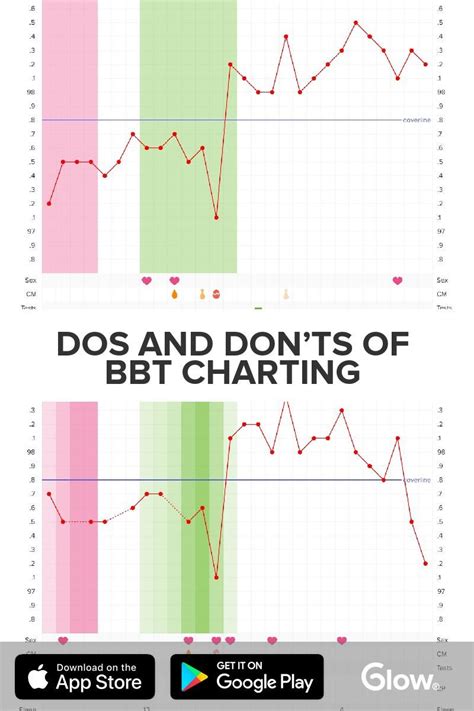Understanding the intricacies of the human body, particularly when it comes to fertility, can be a complex and nuanced topic. One tool that has gained popularity among individuals trying to conceive is Basal Body Temperature (BBT) charting. This method involves tracking the body’s temperature each morning before getting out of bed to identify patterns and potential fertile windows. But how does BBT charting work, and can it really boost fertility?
The Science Behind BBT Charting
BBT charting is based on the premise that a woman’s basal body temperature increases slightly after ovulation, due to the release of progesterone. By monitoring this temperature shift, individuals can retrospectively identify when ovulation occurred. The process is relatively straightforward: each morning, before engaging in any physical activity, the individual takes their temperature using a basal thermometer. This temperature is then recorded on a chart or in an app, along with any other relevant symptoms or observations, such as cervical mucus consistency or menstrual flow.
Identifying the Fertile Window
The primary goal of BBT charting for fertility is to pinpoint the fertile window, which is the period during a woman’s cycle when conception is most likely. This window typically spans about five days leading up to ovulation and the day of ovulation itself. By analyzing the temperature charts over several cycles, patterns begin to emerge. A significant temperature shift, often referred to as a “temperature spike,” indicates that ovulation has occurred. While BBT charting cannot predict with certainty when the next ovulation will happen, it provides valuable insights into the timing of past ovulations, helping individuals plan for future cycles.
Enhancing Fertility with BBT Charting
While BBT charting itself does not directly boost fertility, it serves as a powerful tool for understanding and working with the body’s natural cycles. Here are several ways BBT charting can enhance fertility efforts:
- Timing Intercourse: By identifying the fertile window, couples can time intercourse to coincide with the highest probability of conception, increasing the chances of getting pregnant.
- Identifying Irregular Cycles: For individuals with irregular menstrual cycles, BBT charting can help identify ovulation patterns that might not be immediately apparent, allowing for more informed planning.
- Monitoring for Anovulatory Cycles: If a cycle occurs without a noticeable temperature shift, it may indicate an anovulatory cycle, where no egg is released. Recognizing these cycles can prompt further investigation into underlying fertility issues.
- Combination with Other Methods: BBT charting can be used in conjunction with other fertility awareness methods, such as tracking cervical mucus or using ovulation predictor kits (OPKs), to further refine the understanding of the body’s fertile periods.
Practical Tips for Effective BBT Charting
For those considering BBT charting as part of their fertility journey, several tips can enhance the effectiveness of this method:
- Consistency is Key: Temperature should be taken at the same time every morning, before getting out of bed or engaging in any activity.
- Use a Basal Thermometer: These thermometers are more sensitive than regular thermometers and can detect the slight temperature changes associated with ovulation.
- Record Everything: In addition to temperature, note any physical symptoms, stress levels, and sleep patterns, as these can influence cycle regularity and fertility.
- Choose the Right Tool: Whether using a physical chart or a fertility app, select a method that is easy to use and understand, to ensure consistent recording and analysis.
The Role of Technology in BBT Charting
The advent of digital fertility trackers and apps has transformed the BBT charting landscape. These tools offer automated temperature recording, personalized insights, and predictive analytics based on individual cycle data. They can also integrate information from other sources, such as wearable devices or manual entries, to provide a holistic view of fertility and reproductive health. For many, the ease of use and comprehensive analysis offered by these digital solutions make them an indispensable part of their fertility journey.
Addressing Limitations and Challenges
While BBT charting can be a valuable tool, it is not without its limitations. Factors such as irregular sleep patterns, stress, or certain medications can influence basal body temperature, potentially leading to misleading interpretations. Furthermore, BBT charting provides retrospective confirmation of ovulation rather than predicting it, which can limit its usefulness for planning. To overcome these challenges, it’s essential to combine BBT charting with other fertility awareness methods and to consult with healthcare providers for personalized advice and care.
Conclusion
BBT charting stands as a testament to the body’s intricate systems and the potential for self-awareness and understanding to enhance fertility. By leveraging this knowledge, individuals can make informed decisions about their reproductive health, fostering a deeper connection between mind, body, and the pursuit of parenthood. As with any fertility method, patience, persistence, and a holistic approach to health are key to navigating the journey towards conception.
How accurate is BBT charting for determining ovulation?
+BBT charting is relatively accurate for confirming ovulation has occurred, with studies suggesting it can identify the post-ovulatory temperature shift in most cases. However, its ability to predict upcoming ovulation is limited, making it most useful when combined with other fertility tracking methods.
Can BBT charting help with irregular periods or polycystic ovary syndrome (PCOS)?
+While BBT charting can provide insights into ovulation patterns, its effectiveness for individuals with irregular periods or PCOS can be limited due to the potential for anovulatory cycles or irregular temperature shifts. However, when used in conjunction with other fertility tracking methods and under the guidance of a healthcare provider, it can still offer valuable information and support fertility planning.
How long does it take to see patterns and potentially conceive using BBT charting?
+The time it takes to identify patterns and potentially conceive using BBT charting can vary significantly from person to person. Generally, it’s recommended to track at least three consecutive cycles to start identifying patterns. Conception timing depends on numerous factors, including the regularity of ovulation, the quality of sperm, and the timing of intercourse. For some, conception may occur within the first few months of consistent tracking and planned intercourse, while for others, it may take longer.


